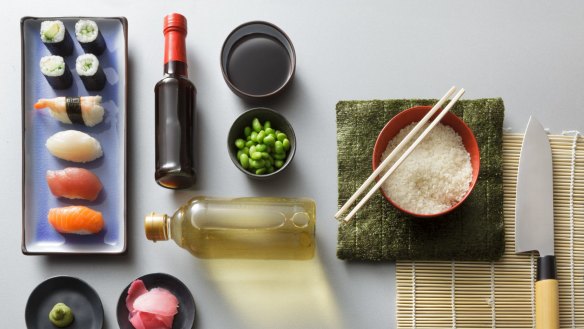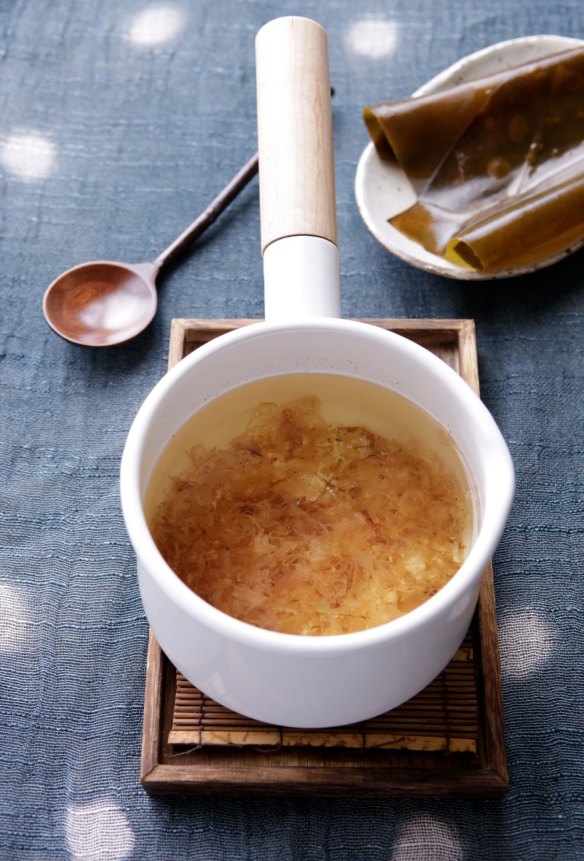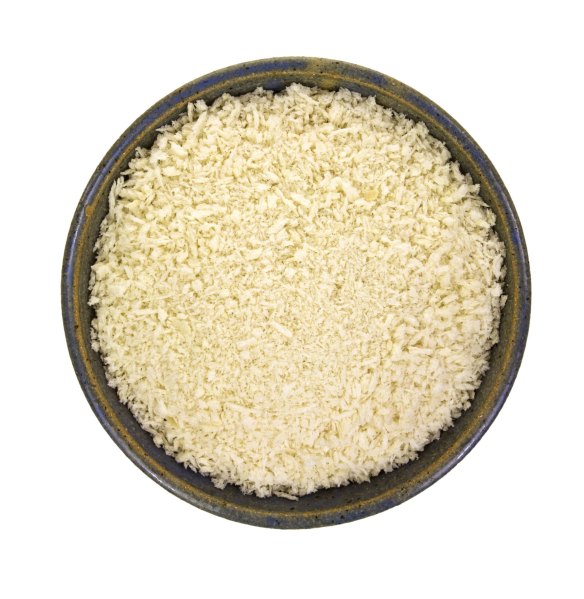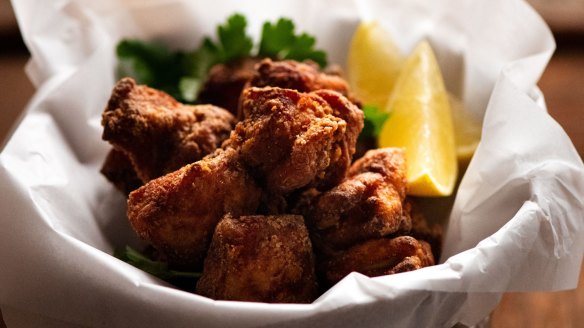RecipeTin Eats' guide to Japanese pantry essentials (plus how to make karaage fried chicken)

Born in Japan, raised in Australia, Nagi Maehashi of RecipeTin Eats was sent to school with bento boxes when all she wanted was a Vegemite sandwich. Little did she know how lucky she was – these days her mum's bento boxes are reserved for special occasions. Here's a peek into her pantry.
Japanese food has many specialised ingredients unique to the cuisine, from the weird (fermented squid guts, anyone?) to the wonderful (Kewpie mayo! Wagyu beef! Panko breadcrumbs!).
The basis of many dishes can be boiled down to a compact list of pantry essentials that are relatively easy to find. If you have these in your cupboard, you're well placed to start an Olympic cooking marathon.

1. Japanese soy sauce
Japanese soy sauce is sweeter and more delicate than Chinese soy sauce. There are various styles, ranging from light to dark. But you really just need one good general purpose soy. Kikkoman All-purpose Soy Sauce is my brand of choice.
2. Dashi

A stock typically made from kombu (kelp) and katsuobushi (dried bonito, see below), dashi forms the foundation of countless Japanese dishes. While it's not hard to make from scratch, it takes some time. There's no shame in using instant dashi instead. Japanese people happily use this most of the time (including my own mother) and it's a good, convenient product. I use Ajinomoto Hon-dashi, sold at most Asian groceries.
3. Sake
Rice wine is used liberally in Japanese cooking to add umami and depth. Along with dashi, mirin and soy, sake is a key savoury flavouring in many broths, soups and some grilled foods. Don't waste that boutique drinking sake you lugged all the way back from Japan for cooking, though. Cooking sake is much cheaper and perfectly acceptable, and is widely available even at major supermarkets. My mother would tut tut if you dare to buy a non-Japanese brand. I, on the other hand, don't judge.
4. Mirin
Syrupy and golden coloured, mirin is a heavily sweetened type of rice wine with a deep flavour. It features frequently in Japanese food, introducing sweetness to dishes, and when reduced gives glazes such as teriyaki their sheen. Good brands include Takara, Manjo and Hinode. Avoid very cheap mirin, which is usually an imitation product.
5. Miso
A salty, fermented soy bean paste that's packed with umami and rich flavour. Miso features in miso soup of course, but is also widely used to flavour broths, stir-fries, glazes and marinades. Many brands and styles of miso are available but white miso and awase miso (blended white and red miso) are the most versatile.
6. Sesame oil
Japanese people adore the nutty, toasted flavour of this strong, aromatic oil. It's used sparingly in dressings and for finishing dishes, and occasionally as a cooking oil. That said, some high-end tempura restaurants even fry in sesame oil. Japan-made sesame oil brands like Kuki and Kadoya are the most authentic, but Korean or Chinese brands are good alternatives.
7. Katsuobushi
Finely shaved flakes of dried bonito (fish) that look bizarrely similar to wood shavings. With a mild and pleasantly salty taste, it's sprinkled as a topping over foods like okonomiyaki (savoury pancakes), takoyaki (fried octopus balls), cold sides and salads. You can buy packets of shaved katsuobushi from Japanese and Asian grocers. Store in the freezer for optimum freshness.
8. Japanese rice
Rice is rice, right? Not quite! Japanese rice is a short-grain rice that's stickier than most, with a subtly sweet taste. That stickiness makes it ideal for scooping up with chopsticks, for bento (lunch boxes), and for shaping into onigiri (rice balls). My family is fond of koshihikari, one cultivar that's super popular in Japan and is sold by various brands here in Australia.
9. Rice vinegar
Japanese rice vinegar is noticeably more mellow than Western-style vinegars, and has a distinct flavour. It's used in dressings, pickling, occasionally in cooking, and to season sushi rice to give it that signature tang that pairs so well with seafood. Pure Japanese rice vinegar is best. Mizkan and Uchibori are two brands you can find in Australia.
10. Panko breadcrumbs

Traditionally used in Japan to crumb deep-fried goodness such as tonkatsu (pork cutlets), these breadcrumbs are now used more widely in Western cooking, too.
Larger and flakier than traditional breadcrumbs, anything they coat are crunchier (arancini balls), anything they're mixed in are lighter (meatballs!), and anything sprinkled with them is just more fabulous (bubbling gratins and pasta bakes!).
So while panko rates at the bottom of my top 10 list of Japanese ingredients, it's actually at the top of my life pantry essentials list!

Karaage
Now that you're armed with the Japanese essentials, start off with one of my all time favourites – karaage! Fried chicken, the Japanese way. The secret: marinating the chicken before frying it twice, which not only makes it extra crispy, it also makes it less greasy. Less greasy from double-frying? I know you don't believe me. You'll just have to try it for yourself.
INGREDIENTS
- 350g boneless chicken thigh fillets, preferably skin-on, cut into 5cm x 4cm pieces
- 2 tbsp (20g) cornflour
- vegetable oil, for frying
Marinade - 1 tbsp soy sauce
- 1 tbsp sake
- ½ tsp mirin
- 2 tsp freshly grated ginger including juice
METHOD
- Pat chicken pieces dry with paper towel. Mix together the marinade ingredients and chicken in a small bowl. Place in the fridge for 1 hour.
- Heat 3–4cm of oil in a heavy-based pot over medium-high heat to 160C.
- Drain excess marinade from the bowl and transfer chicken to a plate lined with paper towels to remove excess liquid (no need to pat dry, we want some moisture).
- Transfer the chicken to a clean bowl and sprinkle with cornflour, turning to coat each piece.
- Place 3 to 4 pieces of chicken in the oil and fry for 3 minutes until light golden. Drain on paper towels and repeat with remaining chicken.
- Skim any crumbs from the oil and increase oil temperature to 200C. Fry chicken in batches for 2 minutes until golden brown and crunchy. Drain on paper towels then serve immediately.
Serves 2 (or 4 as a starter)
This is my mother's karaage recipe, first published on her website, japan.recipetineats.com, republished with her permission.
Appears in these collections
The best recipes from Australia's leading chefs straight to your inbox.
Sign up